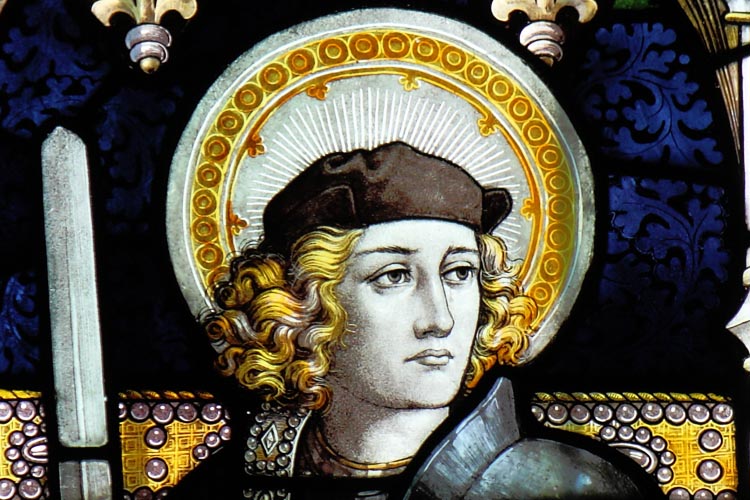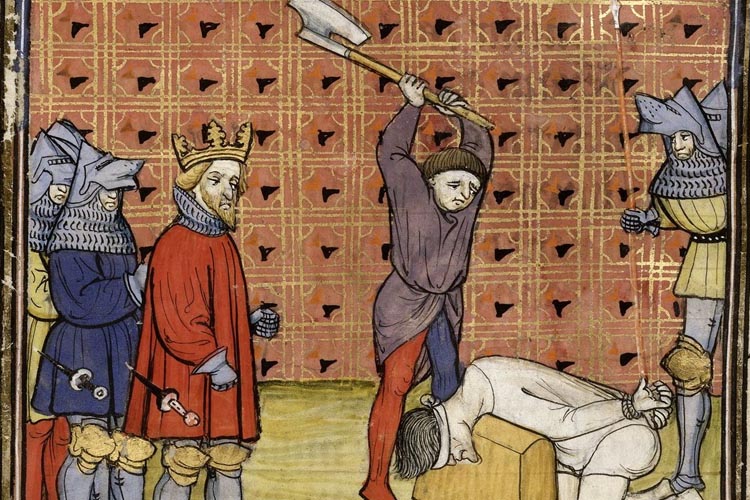Feast Day: 20 June (Westminster)
Saint Alban lived in Verulamium, sometime during the 3rd or 4th century. He lived during the period of time when many British were under the control of the Romans. Little is known about his background apart from the fact that he originally wasn’t Christian.
As often happened during this time period, Christians were put under a large amount of persecution. In Britain, this didn’t change much as, being at the most remote and volatile frontier of the empire, Christianity (and most other foreign ideas) had not really spread this far.
For one person, however, it did have a life changing impact. One night, Alban met a Christian priest fleeing from “persecutors,” and sheltered him in his house for a number of days. During this time, the priest and Alban grew to be friends and, inspired by the faith, piety and charity of the priest, Alban soon began emulating the priest and eventually decided to convert to Christianity.
Eventually, those who were hunting the priest found that he was sheltering in Alban’s house. So, to give the priest time to escape, Alban dressed in the priest’s cloak and clothing and gave himself over to them.
When the judge heard that Alban had offered himself up in place of the priest, he became enraged that Alban would shelter a person who “despised and blasphemed the (pagan) gods.” Additionally, as Alban had given himself up in this Christian’s place, he was sentenced to endure all the punishments that were to be inflicted upon the priest, unless he would comply with the pagan rites of their religion. Alban refused, and declared “I worship and adore the true and living God who created all things.”
The enraged judge ordered him scourged, thinking that a whipping would shake the constancy of his heart, but Alban bore these torments patiently and even joyfully. When the judge realized that these tortures would not shake his faith, he ordered that Alban be beheaded.
There is more to Saint Alban’s story, and various miracles surrounding his death in particular. However, most were written many years after his death and have very probably been embellished in the telling. One surprising detail, however, that is both consistent and can be traced back furthest is the drying up of a river so that Saint Alban could get to where he was to be martyred and the impact it had on those watching.

Alban is now the patron saint of converts, refugees, torture victims, the Midlands and the city of St. Albans. He has a major shrine and abbey dedicated to him in the city of St. Albans on the place where he was martyred. An additional fun fact is that his flag is now the official flag for the Midlands!
Why Saint Alban inspires me
A reflection from someone in our young Catholic community
I love the simplistic nature of St. Alban’s story. He was no great warrior or theologian or leader; he was just a normal man who cared for others. St. Alban’s journey to become a saint began purely because he chose to show love to a complete stranger and did not close his heart to the beauty that others could show him, even when it threatened his own previous beliefs.
I feel that in Saint Alban’s story are so many life-lessons, but also in his death. When Alban came to know God personally, neither death nor torture held any threat for him. The miracle of him drying up a river so he could get to his execution at first seemed mental until I realised it wasn’t done because he wanted death but rather to show how much he wanted union with God.
In my first years of being a Christian, this extreme love for God inspired me to pray more and more with God, so that I too could know this great love. Just like Saint Alban, I found that a personal relationship with God truly did bring intense joy.

